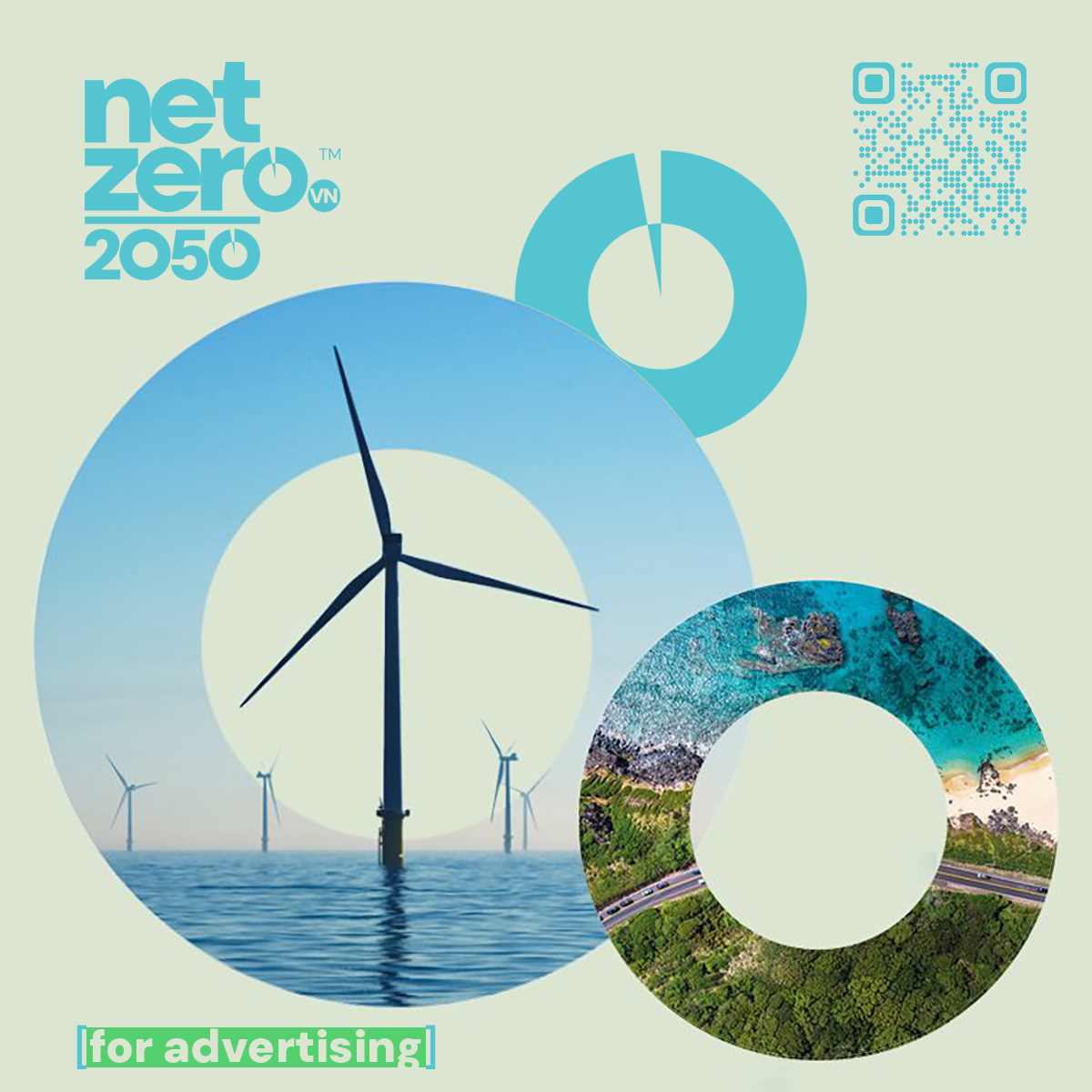
In pursuit of its net-zero emissions by 2050 commitment, Vietnam has been implementing various emission reduction measures, including transitioning to renewable energy, enhancing energy efficiency across industries, and cutting emissions from road transport, with the development of green ports also playing a crucial role in the process.
Under Vietnam’s Seaport Development Plan: 2021-2030 with a Vision for 2050, it is expected that, after 2030, green port criteria will be mandatory in the planning, investment, construction, and operation of seaports around Vietnam. The development of green ports is divided into different phases, with the most important being the 2023-2025 period, when regulations on the management, investment, and construction of seaports will be adjusted to comply with the criteria of green ports. Therefore, 2025 plays a key role for the country, requiring significant efforts to realize the criteria of green ports and create a foundation for the sustainable development of the maritime industry.
Strategic move
Figures from the International Maritime Organization (IMO) show that greenhouse gas (GHG) emissions from the global maritime shipping industry surged by nearly 9.6 per cent between 2012 and 2018, rising from 977 million tons to 1,076 million tons. During the same period, CO2 emissions alone increased from 962 million to 1,056 million tons, underscoring the urgent need for sustainable solutions in the industry. It is also projected that, by 2050, GHG emissions in the industry could rise by as much as 50 per cent compared to 2018 levels.
Therefore, the development of green port models, the adoption of clean energy, and the implementation of sustainable logistics and maritime transport solutions have become inexorable global trends. Many countries, including Vietnam, are encouraged to prioritize investments in smart port infrastructure, renewable energy integration, and low-emission transport systems to align with international environmental commitments and enhance long-term economic competitiveness.
According to the Vietnam Maritime and Waterway Administration (VIMAWA), Vietnam currently has 34 ports serving maritime transport. With its strategic geographical location and a port network that plays a vital role in regional and global supply chains, Vietnam has a pressing need to advance green port initiatives. Specifically, transitioning to green port models not only helps lower greenhouse gas emissions but also strengthens the competitiveness of the logistics sector, attracts greater international investment in green infrastructure, and supports Vietnam’s commitment to achieving a green economy.
Mr. Hoang Hong Giang, Deputy Director of VIMAWA, emphasized that Vietnam’s port network must swiftly adapt to stay competitive or else may miss development opportunities or even fall behind the global industry. “While the transition to green ports presents challenges, it can begin with small, practical steps, such as optimizing queue times and container arrangement, before moving to the adoption of clean energy solutions,” he noted.
Cargo throughput at Vietnam’s ports has been growing at a robust double-digit annual rate, reflecting strong industry momentum, according to VIMAWA’s analysis. Meanwhile, increasing investments in port and maritime infrastructure are positioning Vietnam as a key transshipment hub. Therefore, in order to align with global trends, Vietnam must adopt a sustainable development strategy that ensures environmental responsibility, cleanliness, and long-term resilience.
Mr. Pham Hoai Chung, Chairman of the Member Council at the Shipbuilding Industry Corporation (SBIC), emphasized that developing green ports is not only an inexorable trend but will also offer a sustainable competitive advantage that fosters the growth of maritime enterprises. Developing ports under this port model will help Vietnam attract investors and move towards a synchronized and sustainable port system. “As the port network advances, logistics costs will be optimized, thereby enhancing the competitiveness of Vietnamese businesses in the international market,” he added.
The green maritime transport trend is also increasingly becoming a key criterion for major shipping lines. Many global logistics companies and import-export enterprises prioritize ports that adopt green technologies, operate efficiently, and meet environmental, social, and governance (ESG) standards. Given this, if Vietnam takes the lead in developing green ports, it will not only attract more international shipping routes but also enhance global supply chain connectivity and strengthen the position of its ports in the region.
Integrating technology
Major ports in Vietnam, such as Cat Lai, Hai Phong, and Cai Mep – Thi Vai, are gradually introducing green solutions for a sustainable port model. Measures such as utilizing renewable energy for engine operations, optimizing logistics processes to reduce fuel consumption, and minimizing greenhouse gas emissions are being actively promoted. These efforts not only help mitigate environmental impacts but also enhance operational efficiency, attract green investments, and drive the sustainable development of Vietnam’s port system in the future.
For Vietnam’s green port development to become more effective in the years to come, enterprises specializing in port construction need to accelerate digital transformation and adopt advanced technologies. According to Dr. Hoang Hiep, Deputy General Director of the Portcoast Consultant Corporation, technology and digital transformation play a crucial role in the green port model. Businesses must continue to promote technological adoption and implement synchronized digital solutions to optimize operations, ensuring the effective development of green ports.
He added that integrating advanced technologies such as AI and the Internet of Things (IoT) in port management is a key factor in developing green and sustainable ports. These innovations not only enhance operational efficiency but also contribute to environmental sustainability by reducing carbon footprints.
AI-powered analytics enable better decision-making in logistics, helping ports anticipate demand fluctuations and optimize resource allocation, while IoT facilitates real-time monitoring of port equipment, energy use, and emissions, allowing for proactive maintenance and energy-saving strategies.
Modern technologies also support the integration of renewable energy sources, such as solar and wind power, into port operations, further reducing dependency on fossil fuels. By leveraging these innovations, ports can not only streamline cargo handling and transportation processes but also significantly shorten vessel docking times and lower operational costs. This technological transformation is crucial in maintaining a competitive edge in the rapidly-evolving maritime industry while aligning with global sustainability goals.
Moreover, many experts suggest that one of the key methods in developing green ports lies in the mindset and commitment of each enterprise. The shift towards sustainability requires not only investment in technology but also a fundamental transformation in corporate culture and strategic vision. Businesses should begin with foundational steps, such as developing comprehensive training programs to enhance awareness and equip employees with essential knowledge on sustainable development, ensuring alignment with ESG criteria.
Beyond training, fostering a company-wide commitment to sustainability involves appointing dedicated personnel, such as ESG officers, and establishing specialized research teams that bring together key departments, including operations, logistics, and environmental management. These teams play a crucial role in identifying and implementing innovative green solutions, monitoring progress, and ensuring that sustainability initiatives are seamlessly integrated into daily port operations.
Experts also note that businesses should actively engage with stakeholders, including regulatory bodies, international organizations, and industry partners, to exchange best practices and leverage global advancements in green port development. By embedding sustainability at the core of their operational strategies, enterprises in Vietnam can not only contribute to reducing environmental impacts but also enhance their competitiveness in an increasingly eco-conscious global market.

Bao Tram




